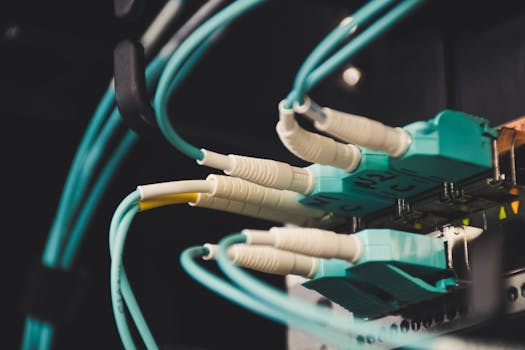From Copper to Fiber: The Revolution of Internet Infrastructure in Africa – A New Era of Connectivity

From Copper to Fiber: The Revolution of Internet Infrastructure in Africa
From Copper to Fiber: The Revolution of Internet Infrastructure in Africa is an ongoing transformation that is changing the face of telecommunications on the continent. For decades, copper cables have been the backbone of Africa’s internet infrastructure, but with the advent of fiber optic technology, the continent is experiencing a revolution in connectivity. This shift is not only improving internet speeds but also enabling more reliable, efficient, and widespread access to the internet.
The use of copper cables for internet infrastructure has been the norm in Africa for many years. However, copper has several limitations, including limited bandwidth, high latency, and susceptibility to interference. As the demand for internet services has grown, the need for a more robust and efficient infrastructure has become increasingly evident. Fiber optic cables, with their high-speed data transmission capabilities and lower latency, have emerged as the ideal solution for Africa’s burgeoning telecommunications sector.
The Benefits of Fiber Optic Internet Infrastructure
The benefits of fiber optic internet infrastructure are numerous and significant. Firstly, fiber optic cables offer much higher bandwidth than copper cables, enabling faster internet speeds and more reliable connections. This is particularly important for applications that require high-speed data transmission, such as video streaming, online gaming, and cloud computing. Secondly, fiber optic cables are less susceptible to interference and signal degradation, ensuring a more stable and consistent internet connection. Finally, fiber optic cables are more secure than copper cables, reducing the risk of data breaches and cyber attacks.
In addition to these technical benefits, the shift to fiber optic internet infrastructure is also driving economic growth and development in Africa. By enabling faster and more reliable internet access, businesses and individuals can participate more fully in the digital economy, accessing new markets, services, and opportunities. This, in turn, is creating new jobs, stimulating innovation, and contributing to poverty reduction and economic growth.
Challenges and Opportunities in Implementing Fiber Optic Internet Infrastructure
While the benefits of fiber optic internet infrastructure are clear, there are also significant challenges to implementing this technology in Africa. One of the main challenges is the high cost of deploying fiber optic cables, particularly in rural and remote areas where the cost of installation can be prohibitively expensive. Additionally, the lack of regulatory frameworks and policies to support the development of fiber optic infrastructure has hindered investment and growth in the sector.
Despite these challenges, there are also significant opportunities for innovation and investment in Africa’s fiber optic sector. The growth of the digital economy and the increasing demand for high-speed internet services are creating new opportunities for businesses and entrepreneurs to develop innovative solutions and services. Furthermore, the implementation of fiber optic internet infrastructure is also driving the development of other critical infrastructure, such as data centers, cloud services, and cybersecurity solutions.
Conclusion
In conclusion, the shift from copper to fiber optic internet infrastructure in Africa is a revolution that is transforming the continent’s telecommunications landscape. With its high-speed data transmission capabilities, lower latency, and greater security, fiber optic technology is enabling faster, more reliable, and widespread connectivity. While there are challenges to implementing this technology, the benefits and opportunities are significant, driving economic growth, innovation, and development in Africa.



